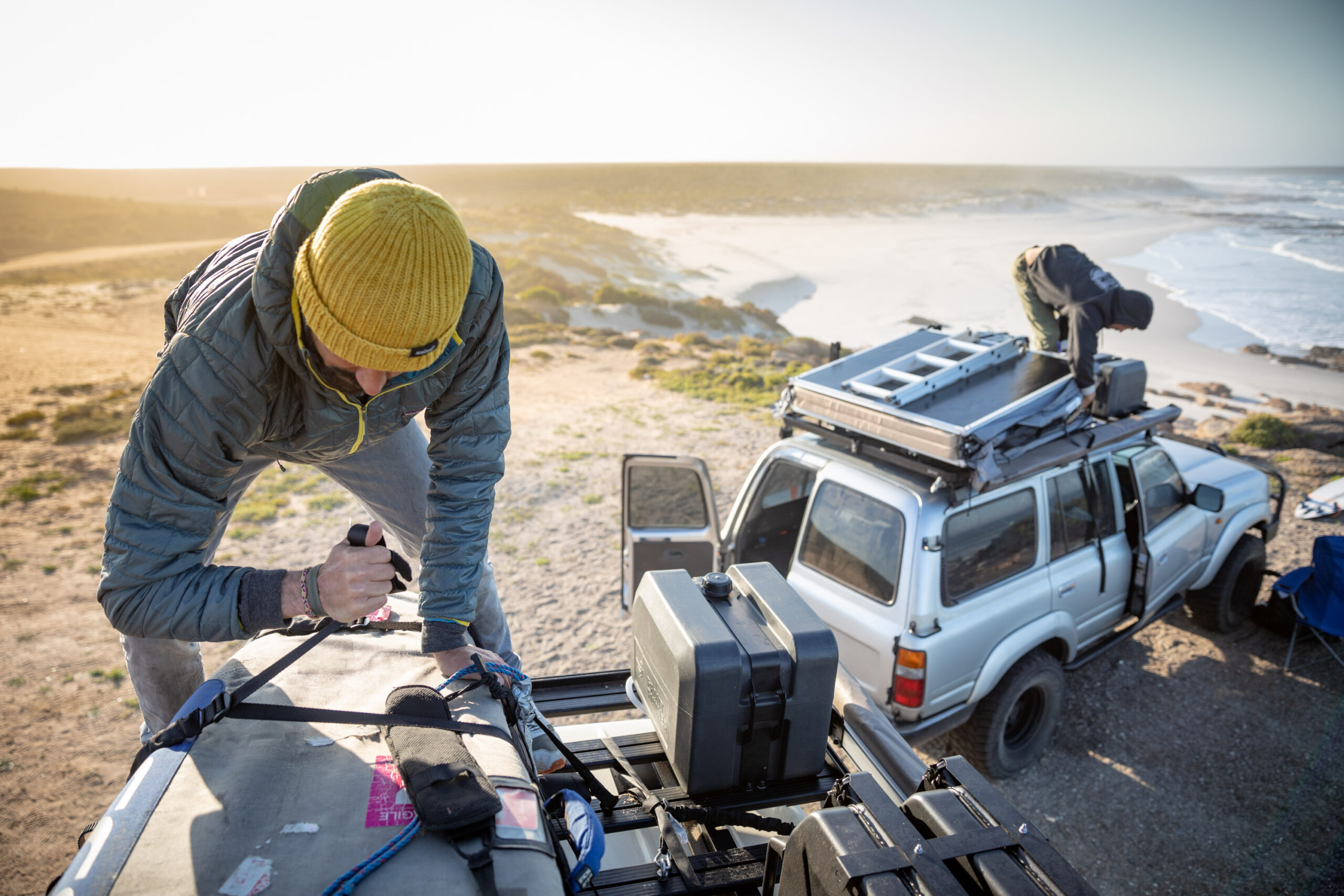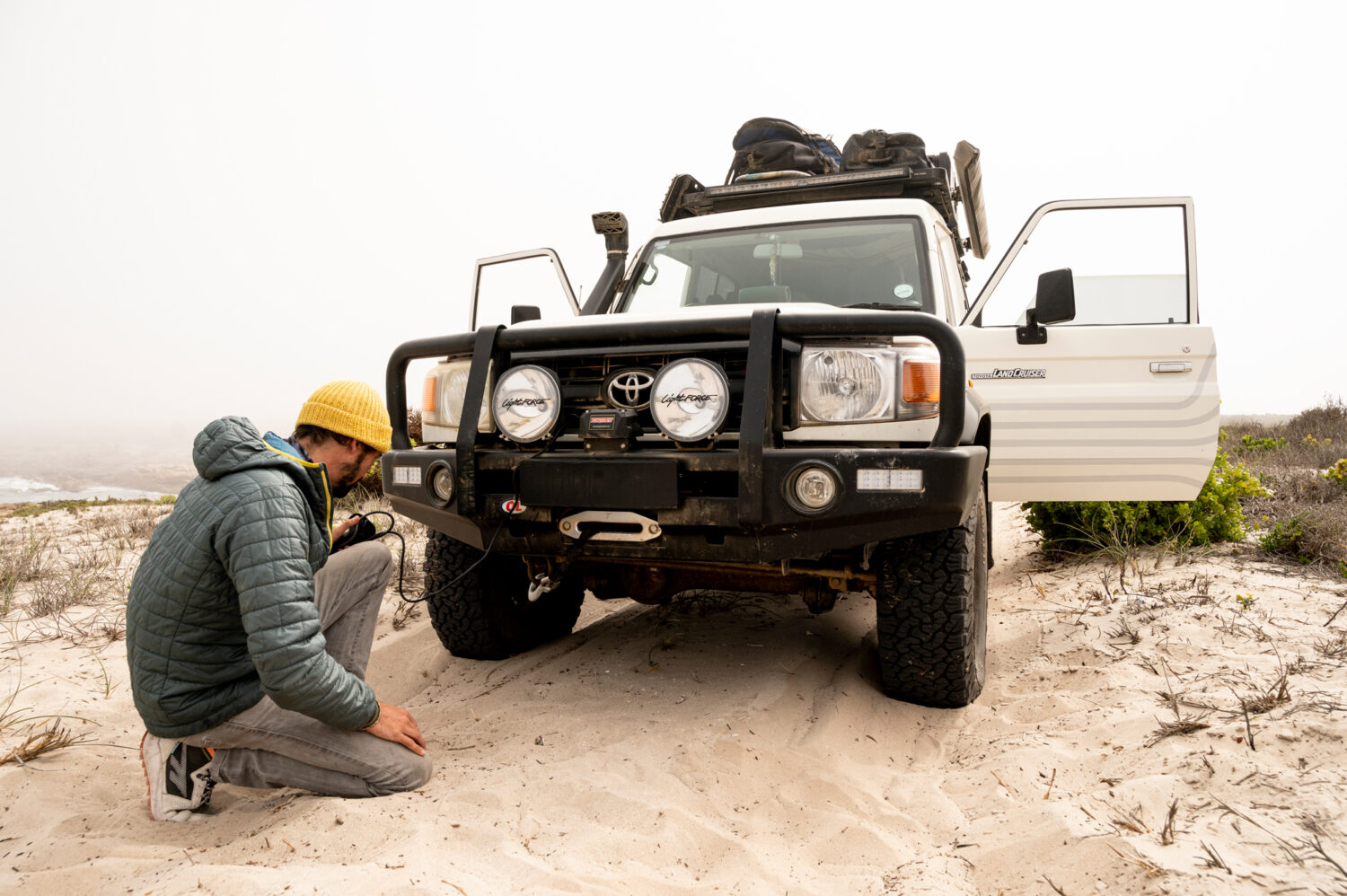Photos by Sacha Specker
Remote sandy tracks, wild temperature swings, howling ocean winds, and great white sharks are just some of the challenges that South African big-wave surfer Frank Solomon and surf photographer Sacha Specker had to overcome while filming their recent Find Anywhere spot with Front Runner Outfitters.
Frank is a pro surfer and environmental advocate who’s been searching the globe for the perfect wave. When he’s not in the water, he’s doing community outreach and public speaking in an effort to make meaningful change. “Traveling the world goes hand-in-hand with my job description, which has given me the opportunity to adventure my way through some pretty amazing places, including, but not limited to, the beautiful shores of Hawaii, the untouched perfection of Madagascar, the rugged Namibian desert, and the playas of Mexico.”
Sacha studied nature conservation which helped him develop a passion for the ocean, ultimately leading to a career as a professional bodyboarder. This culminated with his winning a world title in 2012. He documented his travels with a camera, developing a keen eye for the art of photography and videography. Now, Sacha finds inspiration as a photo-journalist and producer, telling stories about conservation across the African continent. “Today, I find peace and joy while immersed, camera in hand, always moving and always searching for a unique image to unfold and capture.”
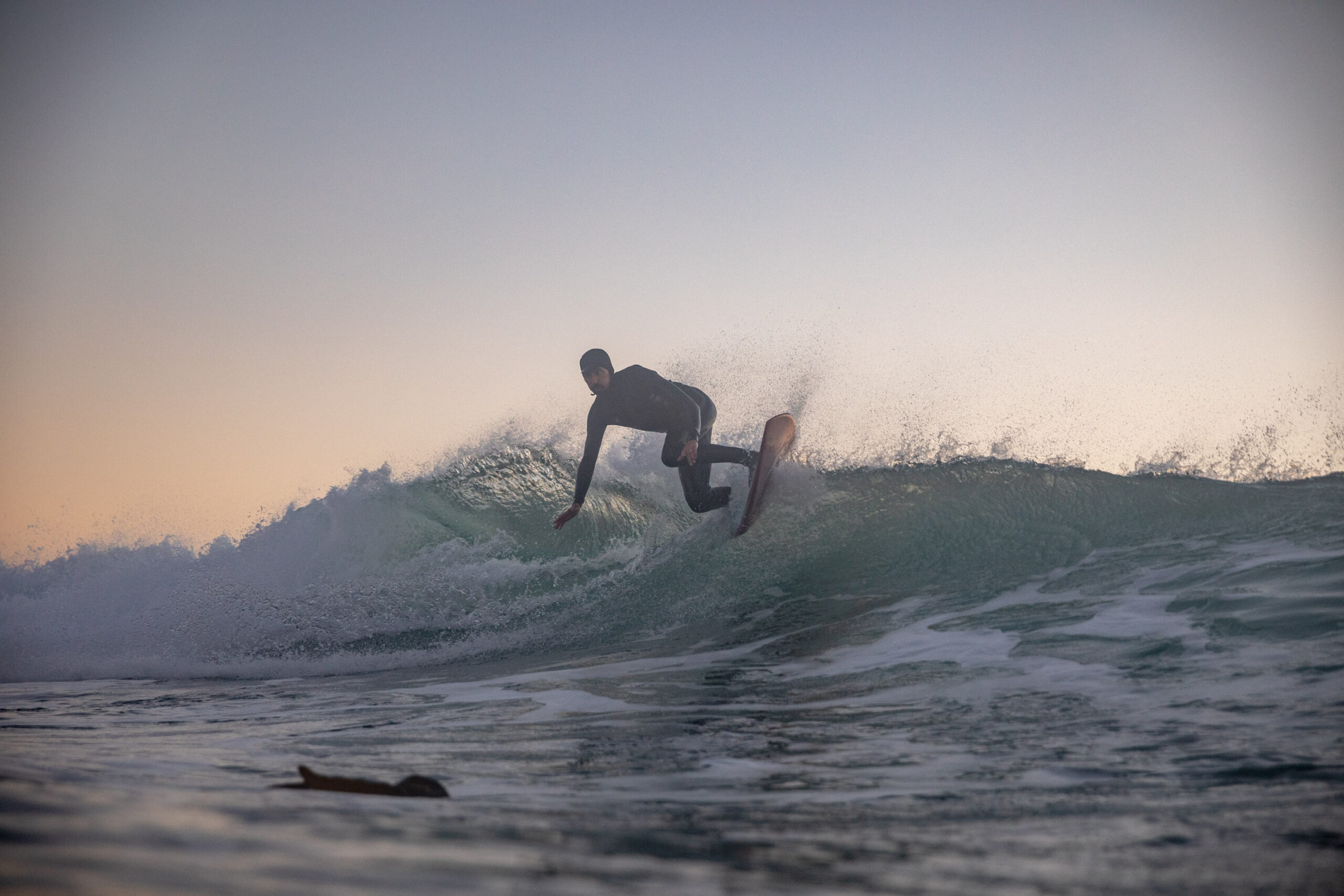
After seeing their short video, I was immediately filled with awe, but also lots of questions. What’s it like surfing huge, remote waves? And how did they pull off this surfing expedition on the border of the Northern and Western Cape of South Africa?
How did your surfing expedition with Front Runner Outfitters come together?
Sacha: To give you a bit of history, Frank and I, this is the kind of stuff we do, the kind of stuff that we thrive on and live for. It was awesome that we were able to build a relationship with Front Runner because they complement us. They provided incredible support, the gear, and a crew who were willing to produce a piece, showing how we pursue our passions.
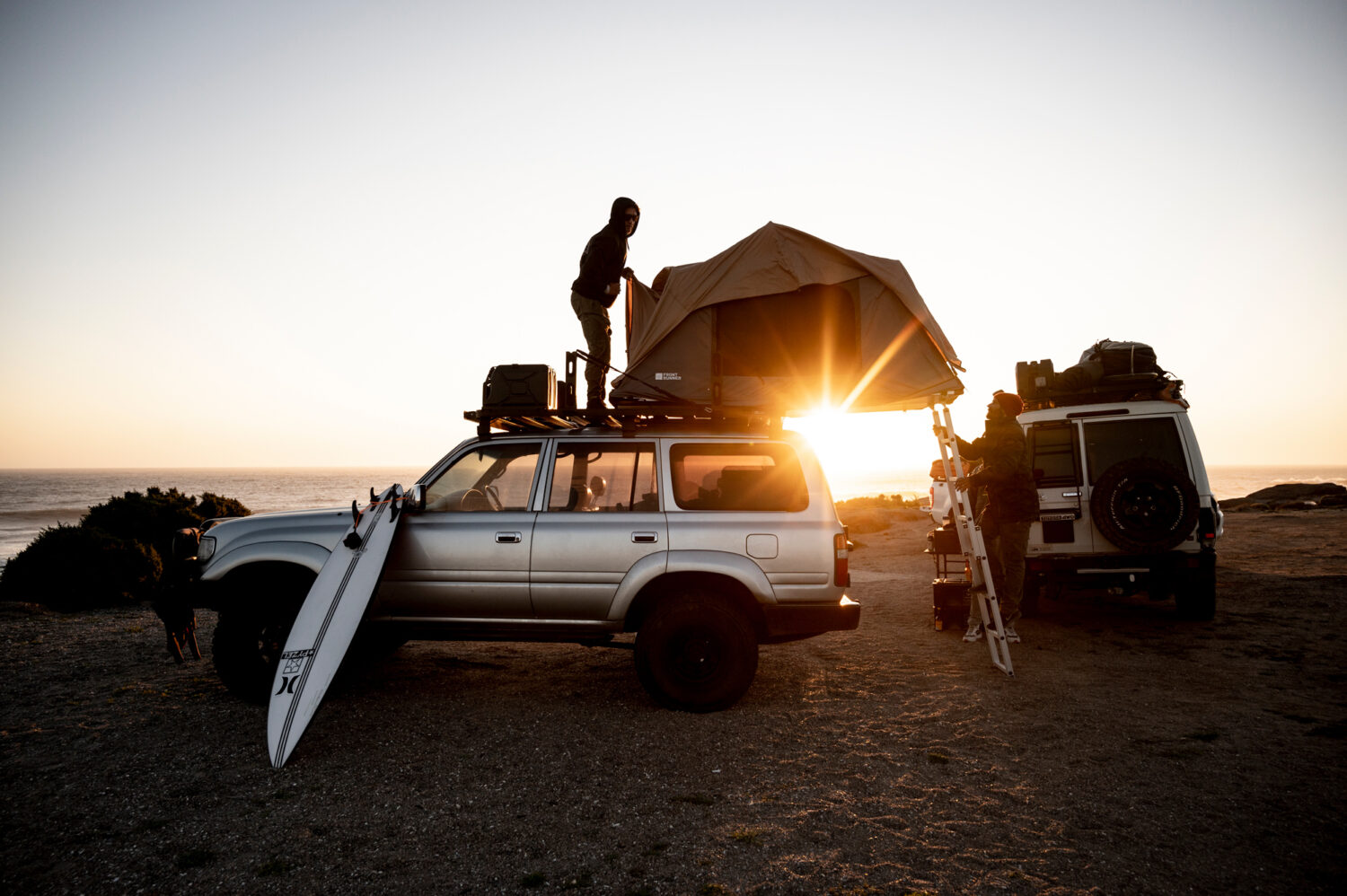
Did you have an overarching goal for this trip?
Frank: I think we wanted to just get some good waves, you know? Because it’s so far from where we live and there is very little surf forecasting for the area, we had a very short window to make the trip work. The fact that it all came together was crazy; we pulled the trigger last-minute. We told Front Runner, ‘We’ve gotta go now!’

Photo: Craig Kolesky
Tell me about the location you were surfing.
Frank: It’s on the border of the Western and Northern Cape of South Africa. It’s very remote, and most people wouldn’t go there. There’s no fresh water, no electricity, shops, or cell reception. We surfed there before with John Florence and his crew for a surfing film (View From a Blue Moon), and even though we warned them ahead of time, they were surprised by how remote it was. You have to bring everything that you need to survive.
![]()
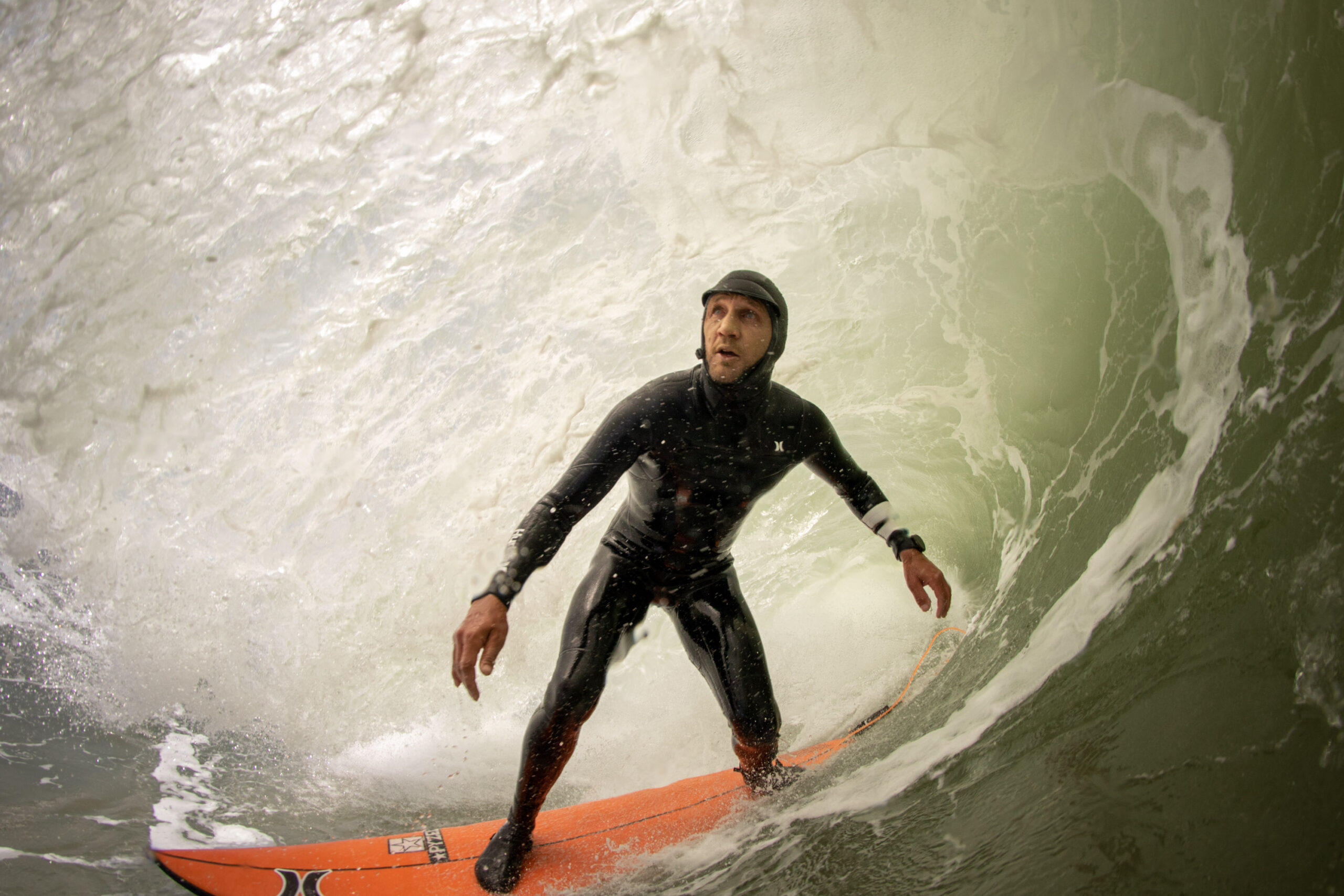
Sacha: You might be able to take a boat, but if something went wrong, you would be in big trouble with no way to get out of there. I definitely think 4WD is the way to go, and you need to know where you are going. The ocean is pretty wild down there. It’s in the South: big, very unpredictable oceans and harsh weather conditions. You get down to freezing temperatures at night and extremely hot during the day. It’s a desert environment.
Frank: And the wind. On the first day of that trip, the wind was howling. I was sleeping in the rooftop tent on my truck, and I thought the tent was going to blow away.
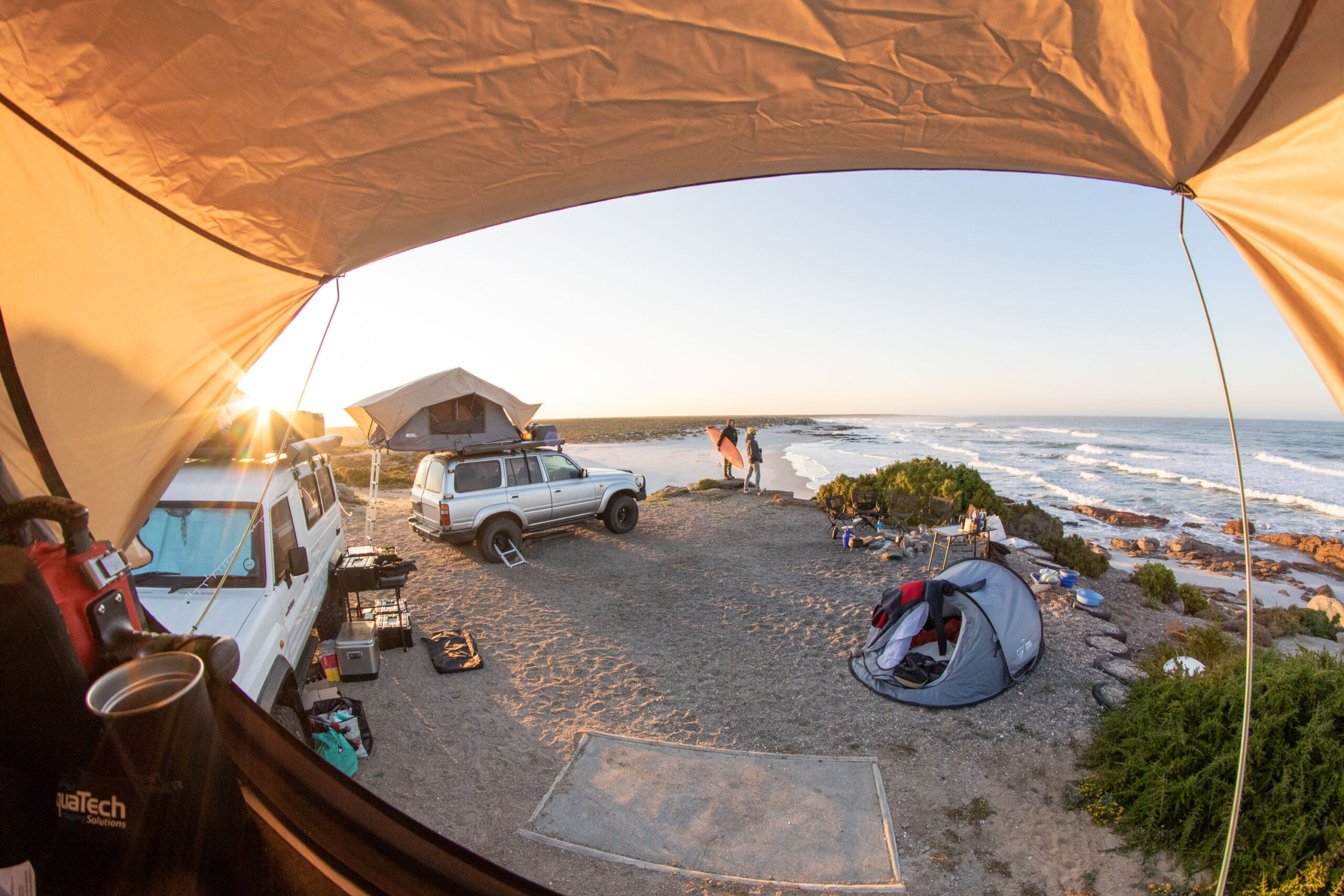
Was it challenging to fit all of the gear that you needed for this trip into your vehicles?
Frank: We did have to take an extra truck; we were also filming, so there was all of the camera gear in addition to the film crew and our surfing equipment. We ended up with four vehicles to bring everything that we needed.
Sacha: It turned into quite a logistical thing, if I can call it that. We had to look after the film crew and make sure they had everything they needed since they had never been there. But that was half the fun as well—working together, it added to the adventure. And they did really well. I have to give them props. It’s not an easy place to make a film; it’s serious, hard-core filmmaking.
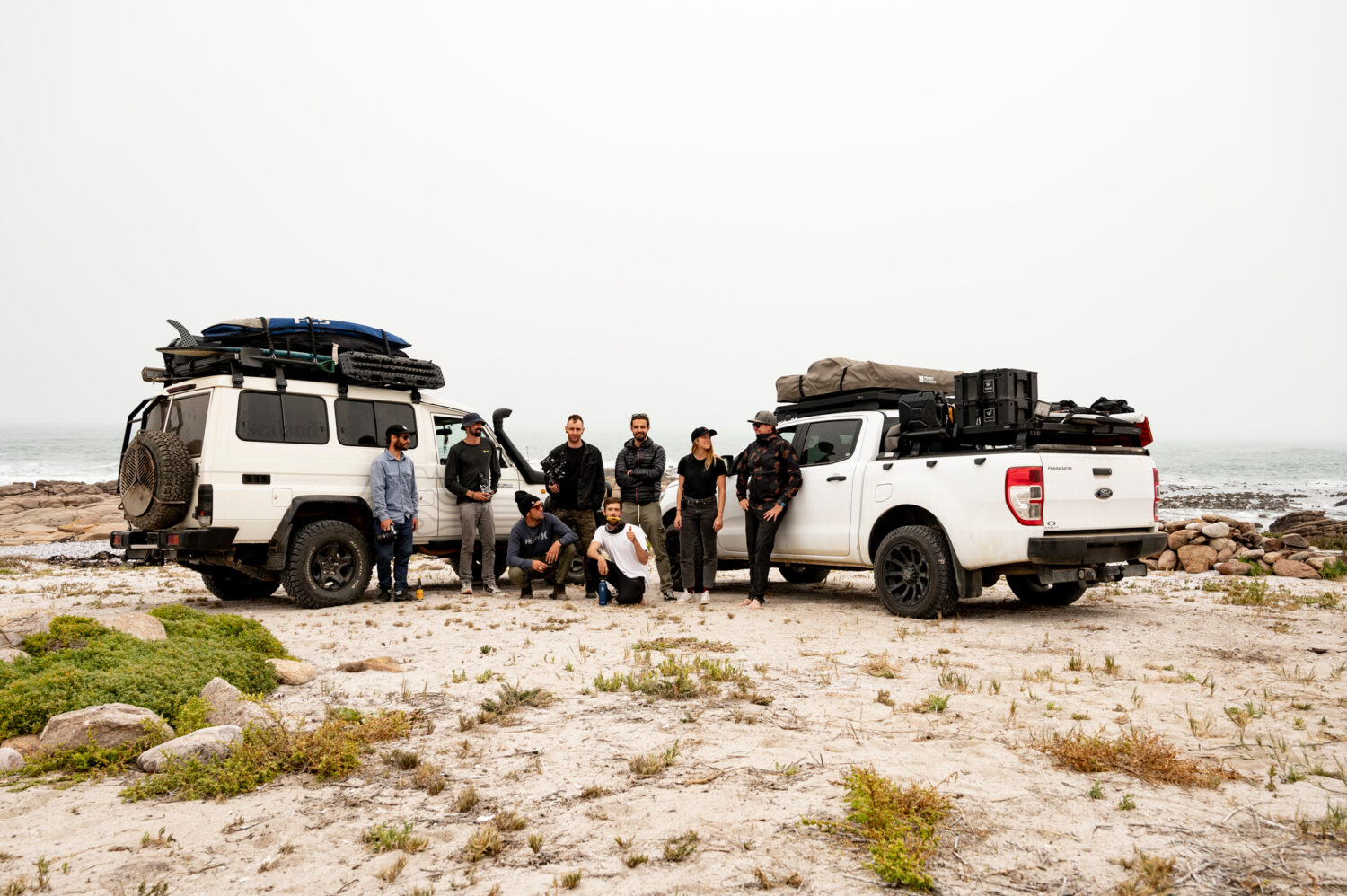
Were there any geopolitical concerns for this particular location?
Frank: (laughs) Nope. There’s literally no one there; no one’s going to come there and bother you. It’s super safe.
Sacha: I don’t think I’ve ever locked my car there or worried about leaving anything in my tent while I’m miles away all day. I wouldn’t even worry about a thing.
Frank, you took your personal truck on this trip. How did that work out?
Frank: I took my 80-Series 1993 Land Cruiser, a 4.2 diesel (the grey one in the video). It’s got high mileage, and I actually noticed an oil leak before we started the trip that we didn’t have time to address because we would have missed our weather window. It ended up getting disabled and had to be recovered on a flatbed truck.
Sacha: That part didn’t make it into the film—the things that no one knows!
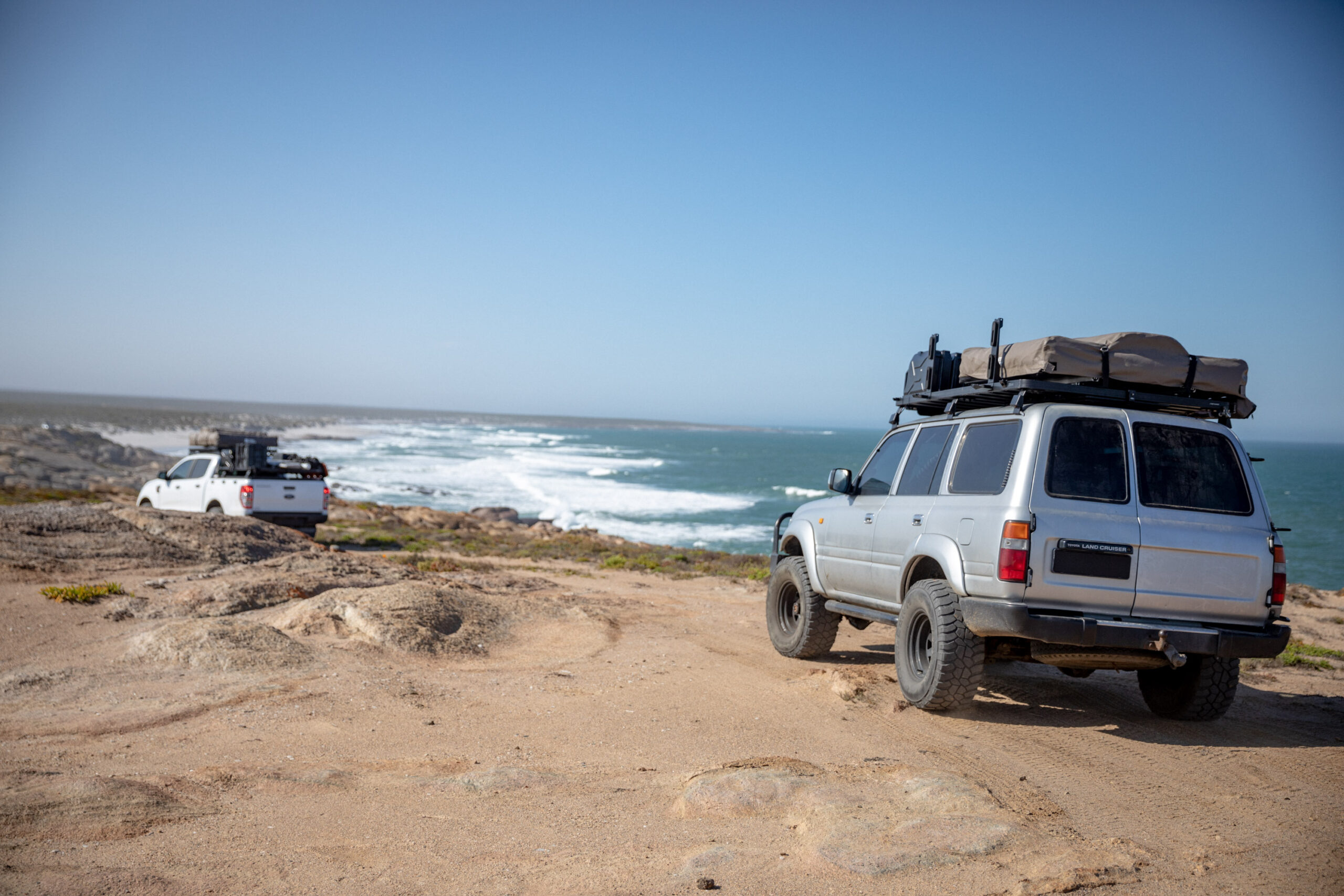
Is the trail pretty rough? Was it inevitable that there would be a vehicle issue on this trip?
Frank: If you don’t have 4WD, you are gonna get stuck. Our friend Craig got so stuck; he has a 2×4 Ford truck that you saw in the video. He got almost down to his axles in the sand.
Sacha: Yeah, if it weren’t for the other trucks, he’d still be stuck out there. We had to get treads out, and ultimately, we winched him out. It was a full-on rescue operation (laughs).
Frank: It’s so hard in the sand; it was brutal.
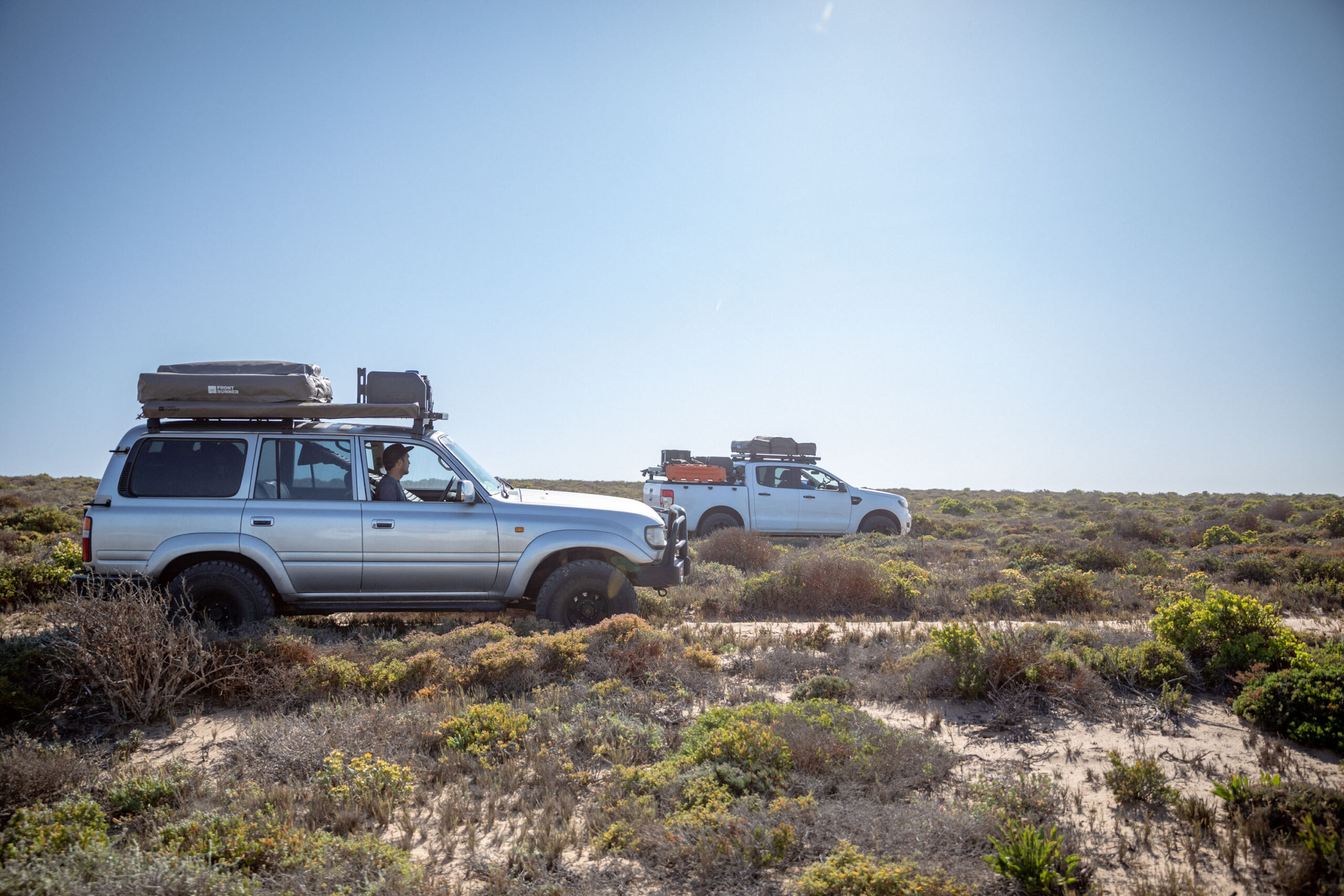
What would happen if there was a catastrophic breakdown out there? Is there a tow service that could come and recover a disabled vehicle?
Sacha: You could speak nicely to a local farmer, and maybe he’d use his tractor to pull you out. You’d have to get pretty creative, though. Otherwise, you’re leaving your truck out there.
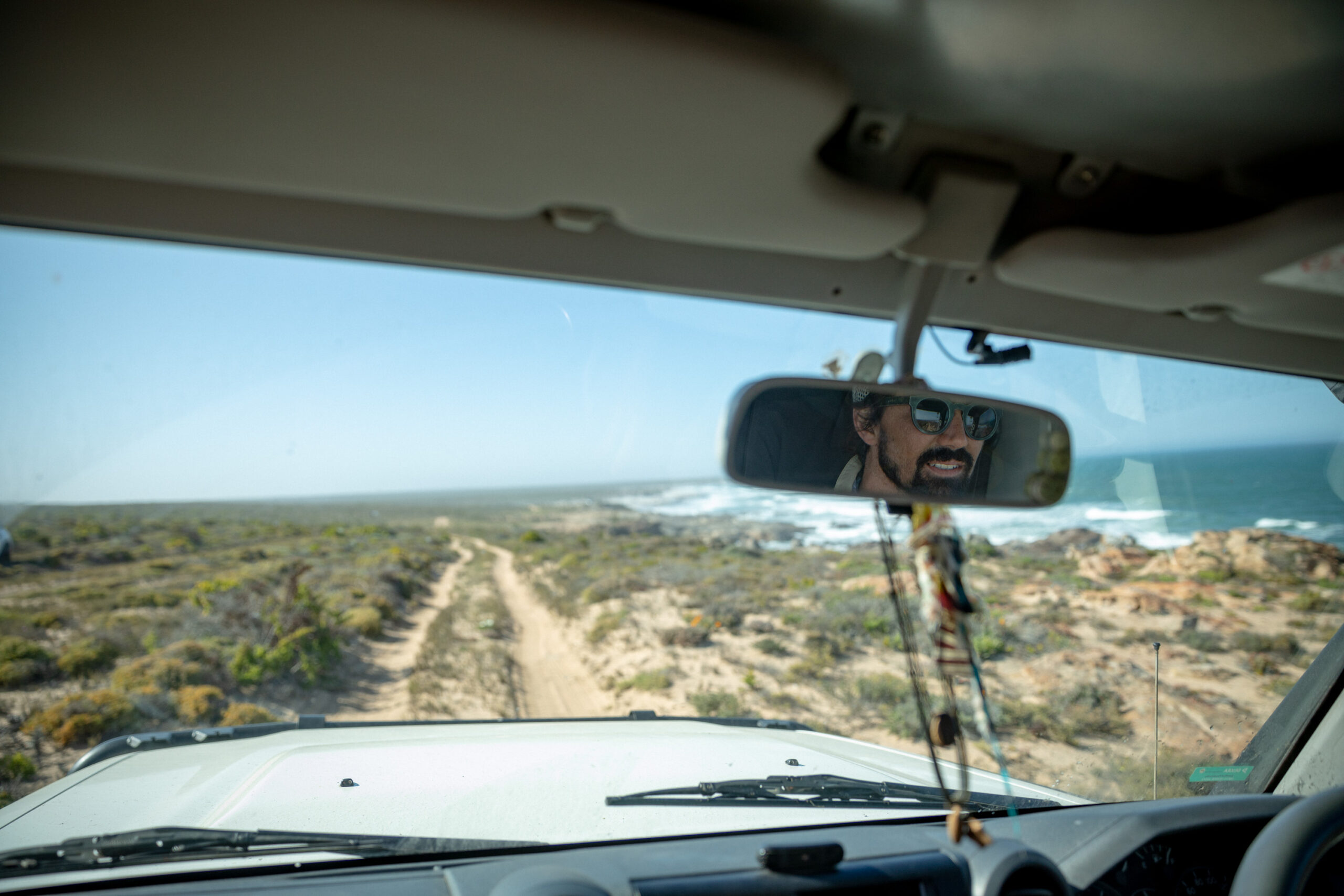
Frank: The biggest issue is trying to call for help out there. There’s no cell reception, and it’s a very long walk before you’d be able to find service.
What are the biggest risks with surfing these super remote waves? What would you do if someone got injured?
Frank: It’s a big risk. We’re all pretty confident surfers, but accidents do happen, and you could fall weird and hurt your neck or back. If Sacha was swimming [while filming me] and saw that I had an accident, he might have been able to help me, but the waves are very big so it would be really difficult. 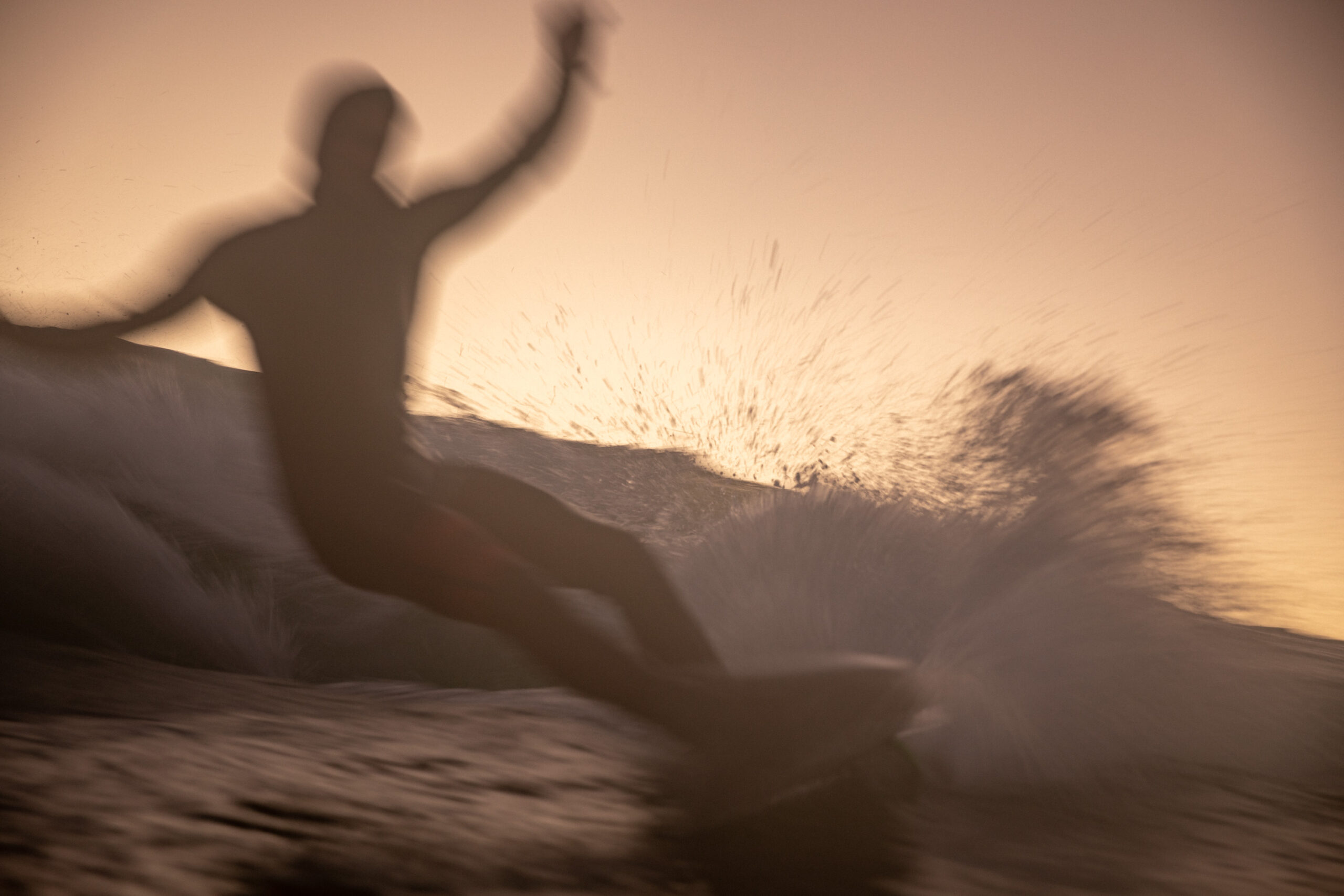
Sacha: I think the risk does exist, but it’s the remote nature of the location that makes it more dangerous. The chance of an injury is similar to anywhere with big surf, but managing an accident in a remote location, that’s a big difference. A minor accident could quickly become a much bigger problem without the infrastructure that exists in front-country locations. In that sense, the risk is much higher. There’s very little margin for error.
Does that risk make the reward of succeeding in a location like this even sweeter?
Sacha: Totally. When you are standing back on the beach after four hours of swimming and filming or after catching some of the best, heaviest waves of your life—when you can stand on the beach and high five each other after a session like that, the reward is heightened by the fact that there was uncertainty.
How big was the surf?
Frank: Maybe 10 feet.
Sacha: Yeah, I say we scored some pretty serious 10-foot surf. These are waves of consequence—pretty serious, unfiltered raw ocean.
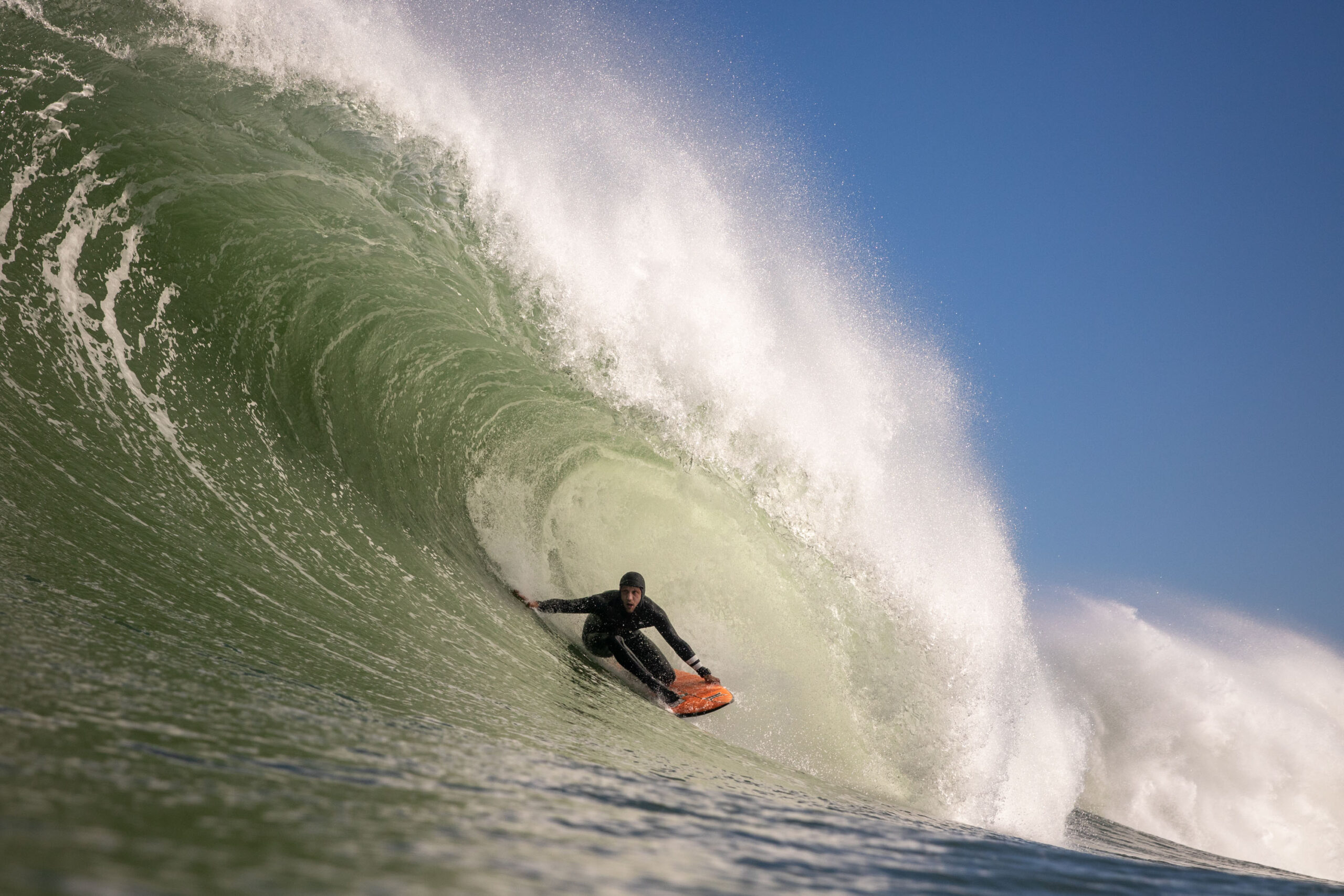
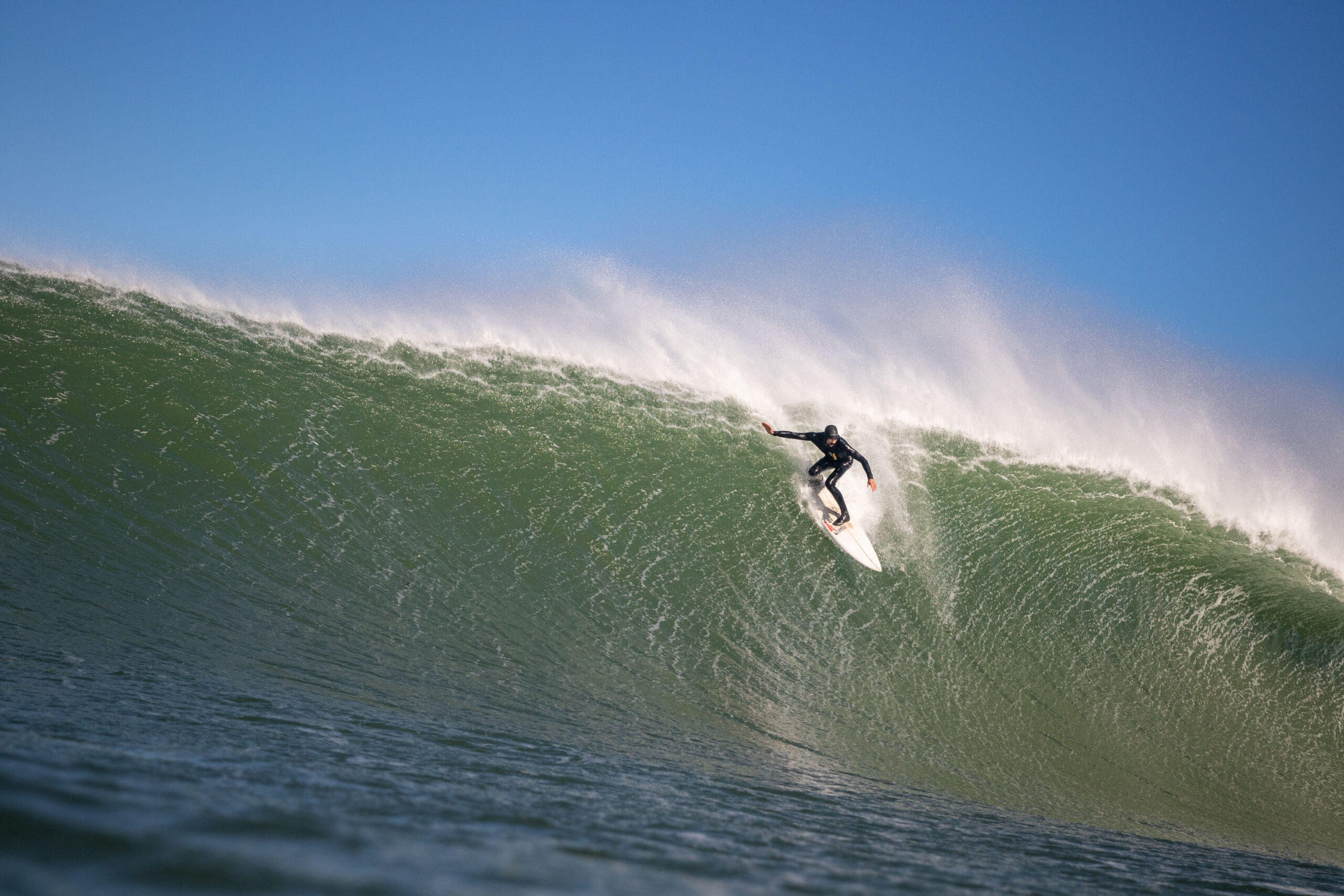
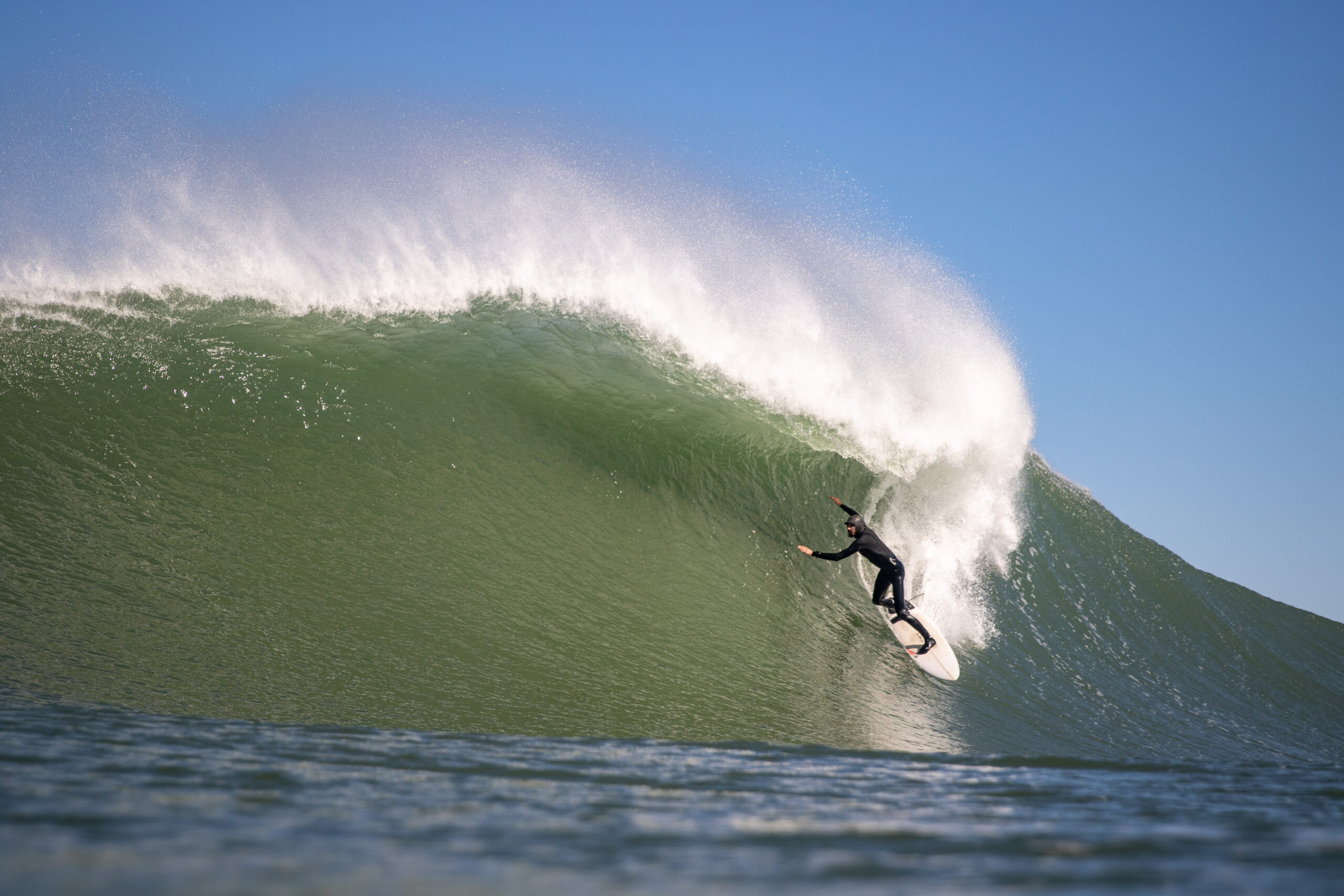
Frank: Just paddling out that day was super hard. It was consistently breaking in the same place; one of our videographers couldn’t even make it out. Luckily, Sacha made it out. It was 10 to 12 feet, super heavy, the water was super cold, with howling ocean wind. It was difficult to line up and get a good one with the wind shifting around like it was.
I know there are great white sharks out there. Is that ever a concern for surfing a spot like this?
Frank: I’m sure that it is a concern, but I don’t allow myself to think about it, because if I did, I’d never go surfing.
Sacha: I try not to think about it too much either; it’s better just to enjoy your time surfing.
Sacha, as a storyteller, can you enjoy an experience and document it at the same time?
Sacha: I think that’s a very valid question for photographers. From my experience, I think it’s important to put the camera down in some moments and enjoy the moment 100 percent—enjoying the experience that you’ve come for. Putting the camera down, you are far more connected, and you can appreciate what goes into making it all happen.
I’ll take any opportunity to put the camera down if we’ve got the shot. Quite often, that’s when I’ll grab a board and go surf for half an hour. By the time I come back in, Frank’s making the fire at camp. Then we all hang around the campfire and talk s*** and just enjoy the moment. That’s when the real stories of these adventures come out, when there isn’t a camera in your hand. Yeah, the natural moments definitely unfold much better if you are not always trying to take a photo.
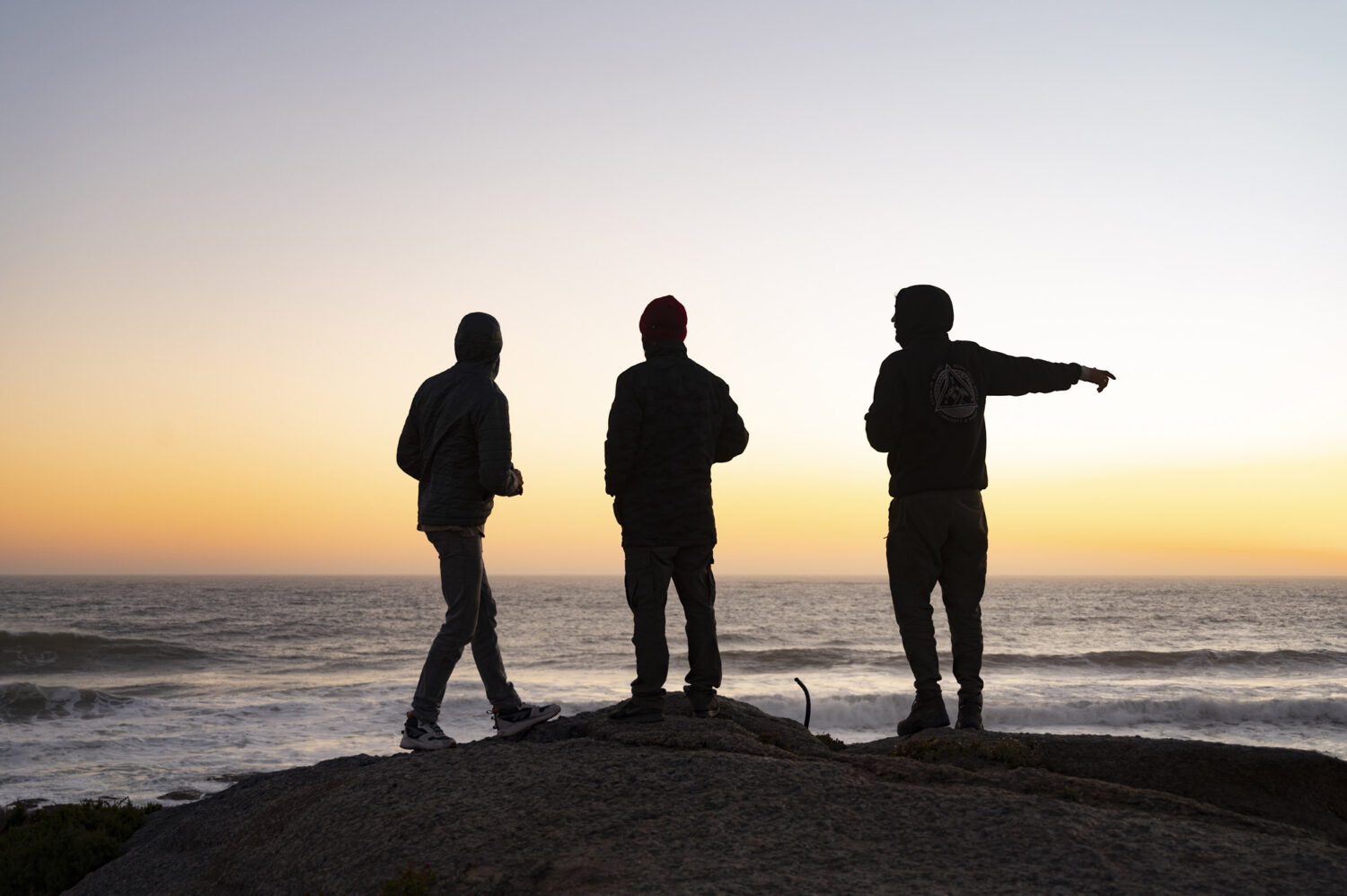
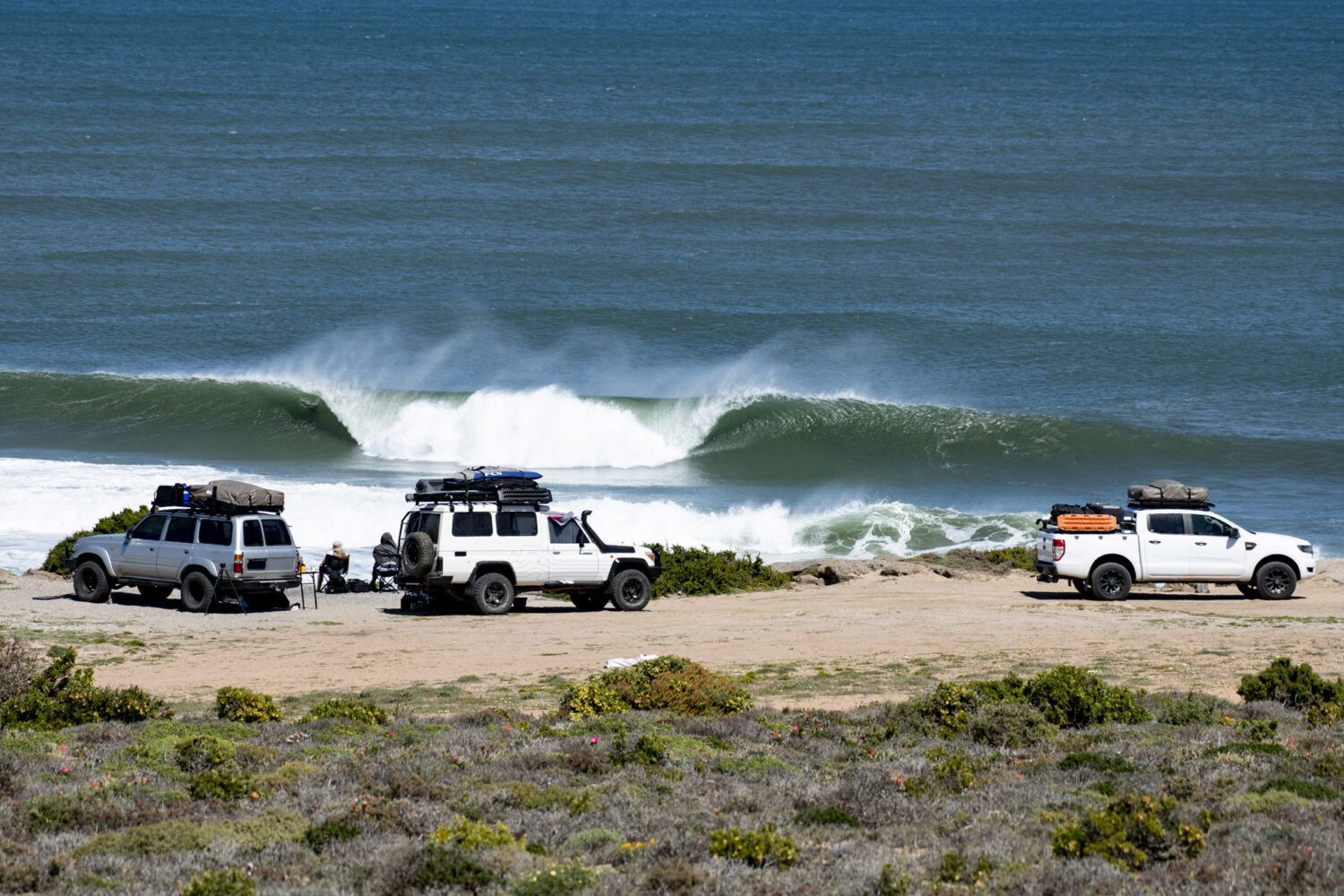
Photos: Craig Kolesky
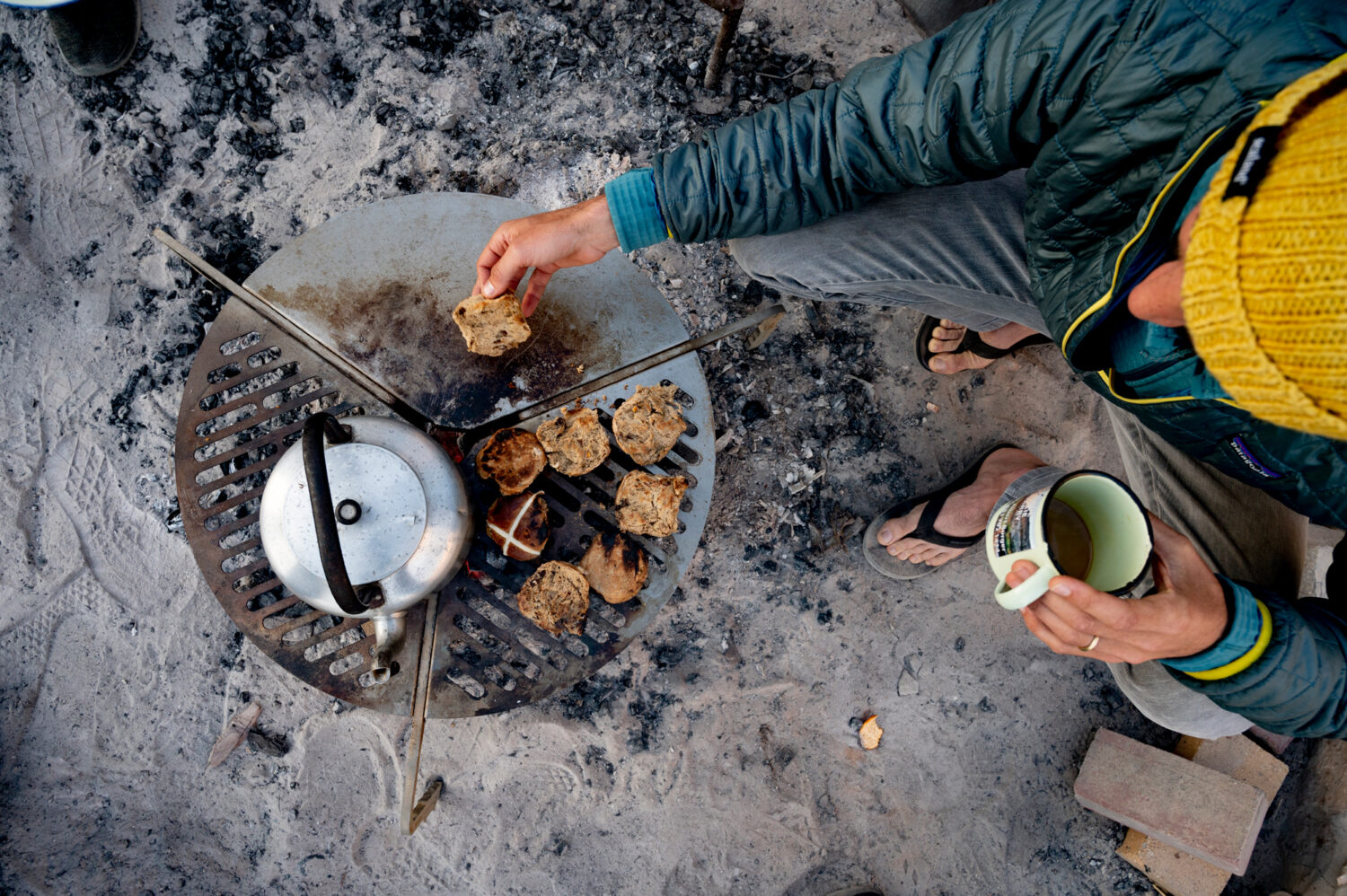
Is there satisfaction beyond the surfing? What did you mean when you talk about the “search” in the video?
Frank: The best thing after a successful surfing mission, after catching some epic waves, is coming back to camp and lighting a fire to cook some stew and hanging with your friends. That’s the best part. You’ve planned the trip, you’ve caught the waves, and then you are drinking a cold beer in the evening, recounting your experience. That’s what it’s all about.
Sacha: I think you nailed it, Frank. And to add to that, actually planning out every little thing, bringing everything into the backcountry. You can’t take anything for granted out there, whether it’s a small thing or something major.
Frank: This ‘search’ is what keeps pushing us further up the coast. You keep searching for the next wave, and that keeps you coming back. If it were good every time, that would be boring. Looking at charts, looking at Google Earth, seeing where there might be a new wave, and figuring out how to get there and survive. Living in South Africa, where we can drive up the coast in the middle of nowhere looking for waves, that’s pretty special. The search continues!
In one sentence, describe your perfect wave.
Sacha: I’m not as badass as Frankie; I don’t want something quite as big, but probably just a nice 6-foot reeling right-hander that’s hollow—in warm water (laughs).
Frank: I think a beach break, with a couple of my friends. Yeah, a perfect A-frame beachie, 6 to 8 foot—that would be my perfect wave.
Learn more about Frank Solomon and see what he’s up to on Instagram. Learn more about Sacha Specker and see what he’s up to on Instagram. Check out the rest of the Front Runner Outfitters Find Anywhere video series on YouTube.
Our No Compromise Clause: We carefully screen all contributors to make sure they are independent and impartial. We never have and never will accept advertorial, and we do not allow advertising to influence our product or destination reviews.


